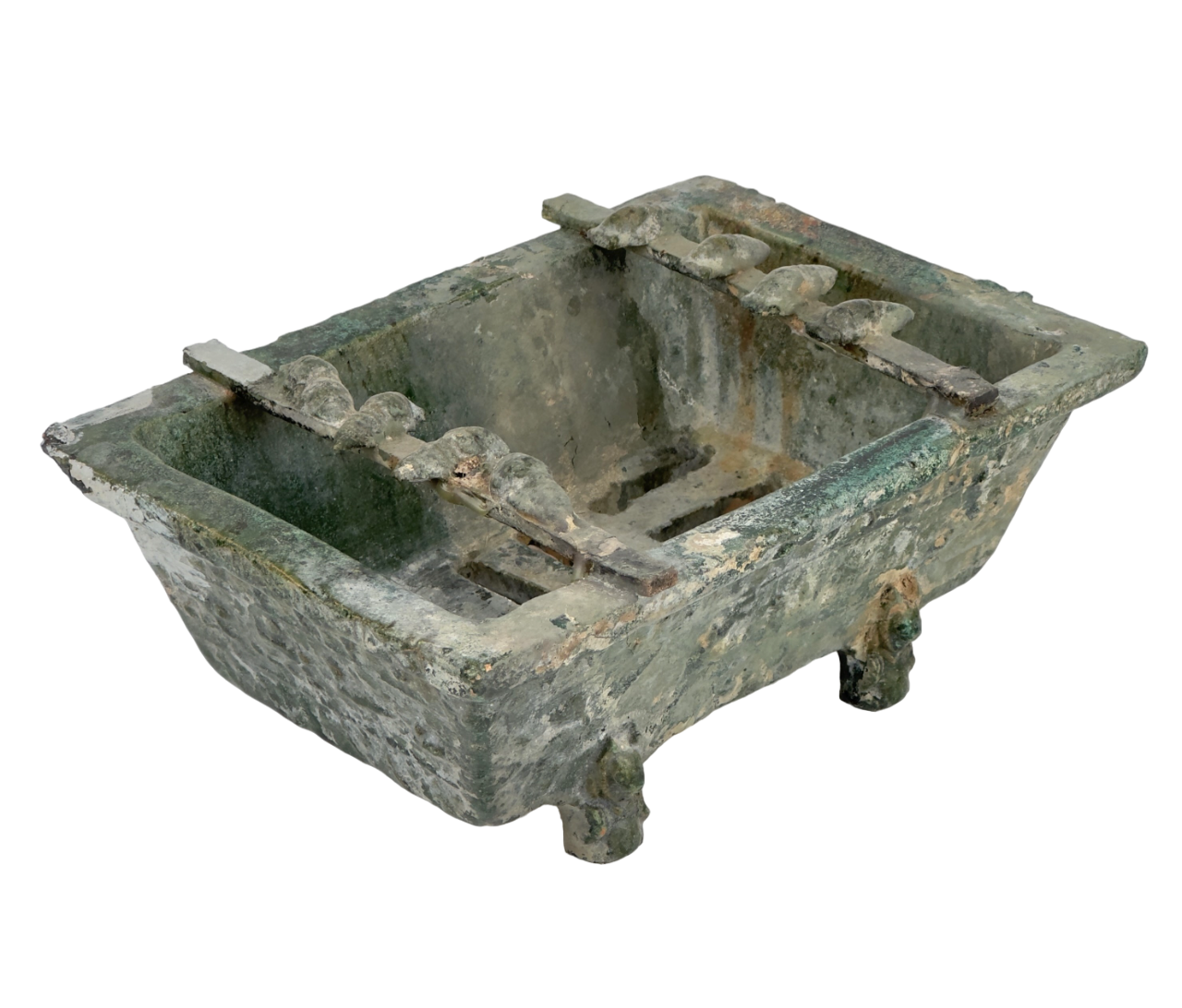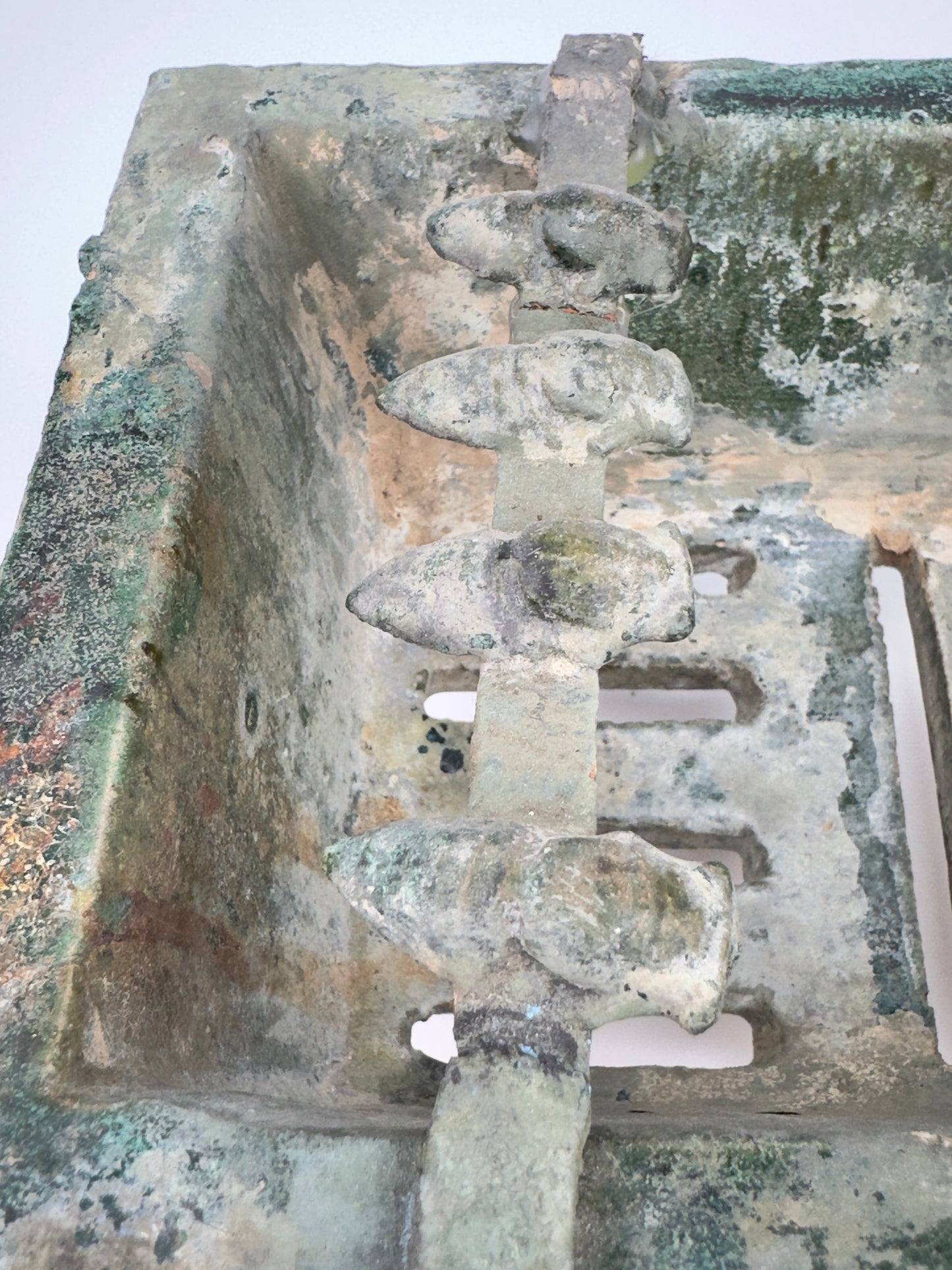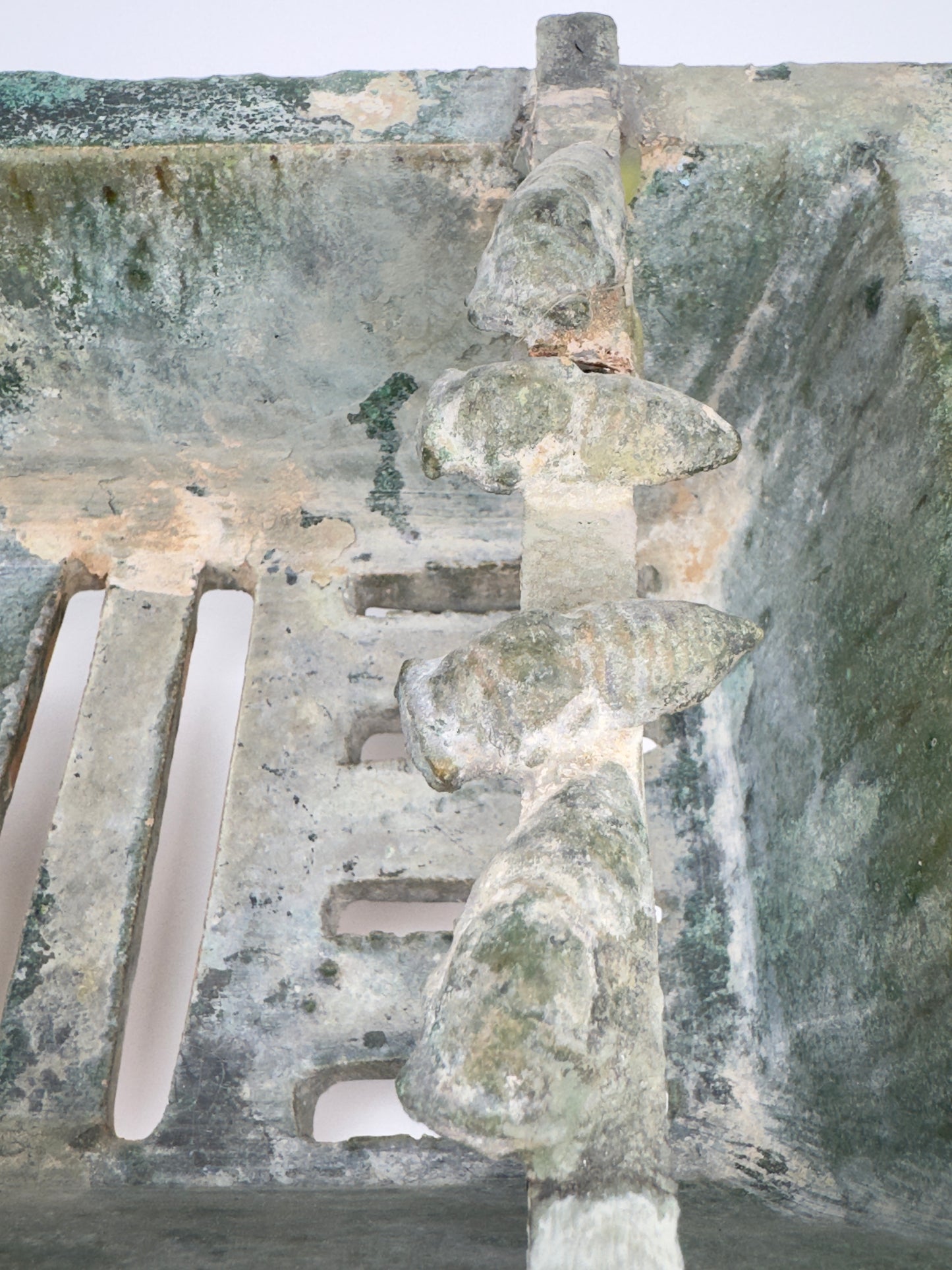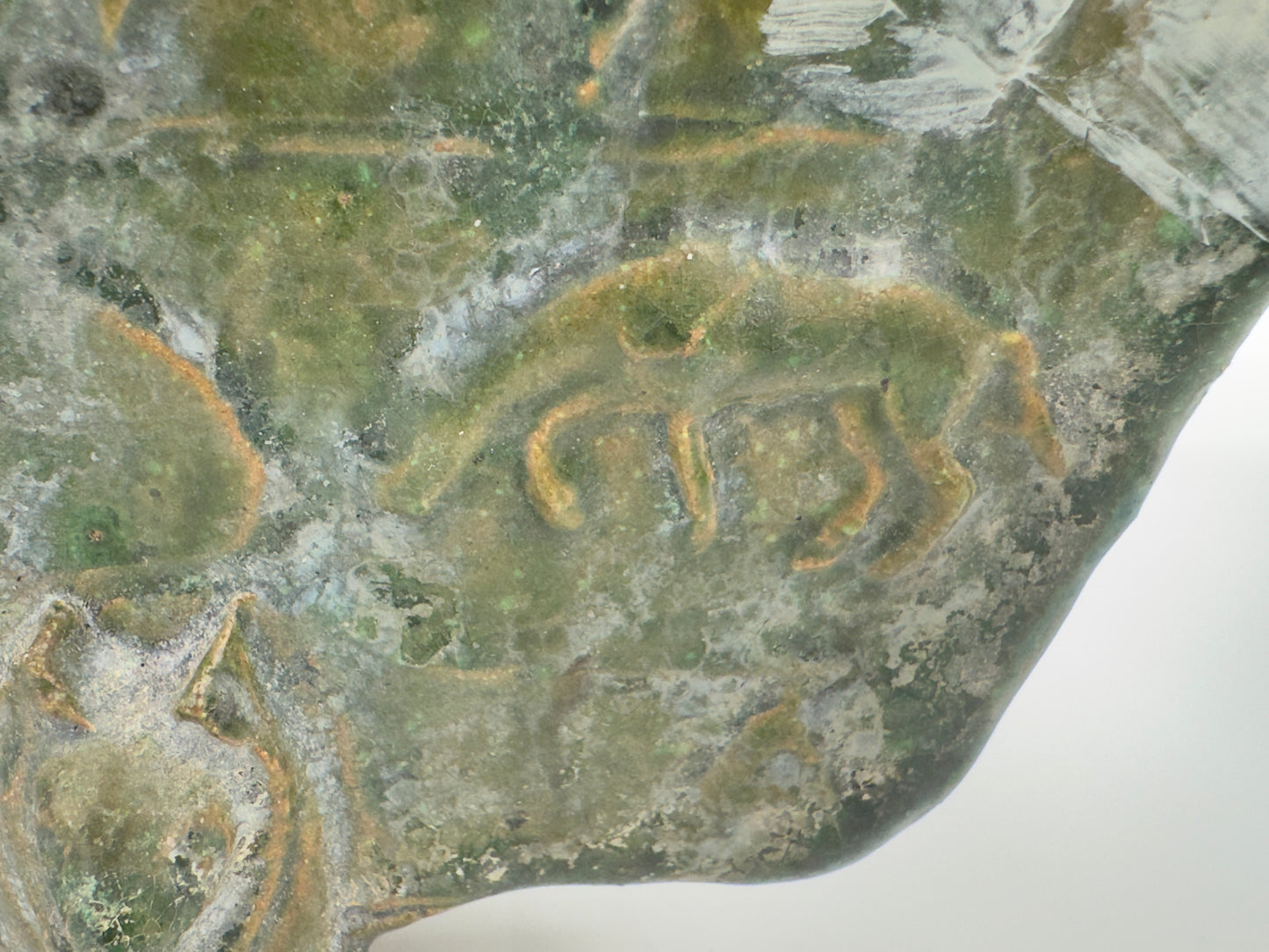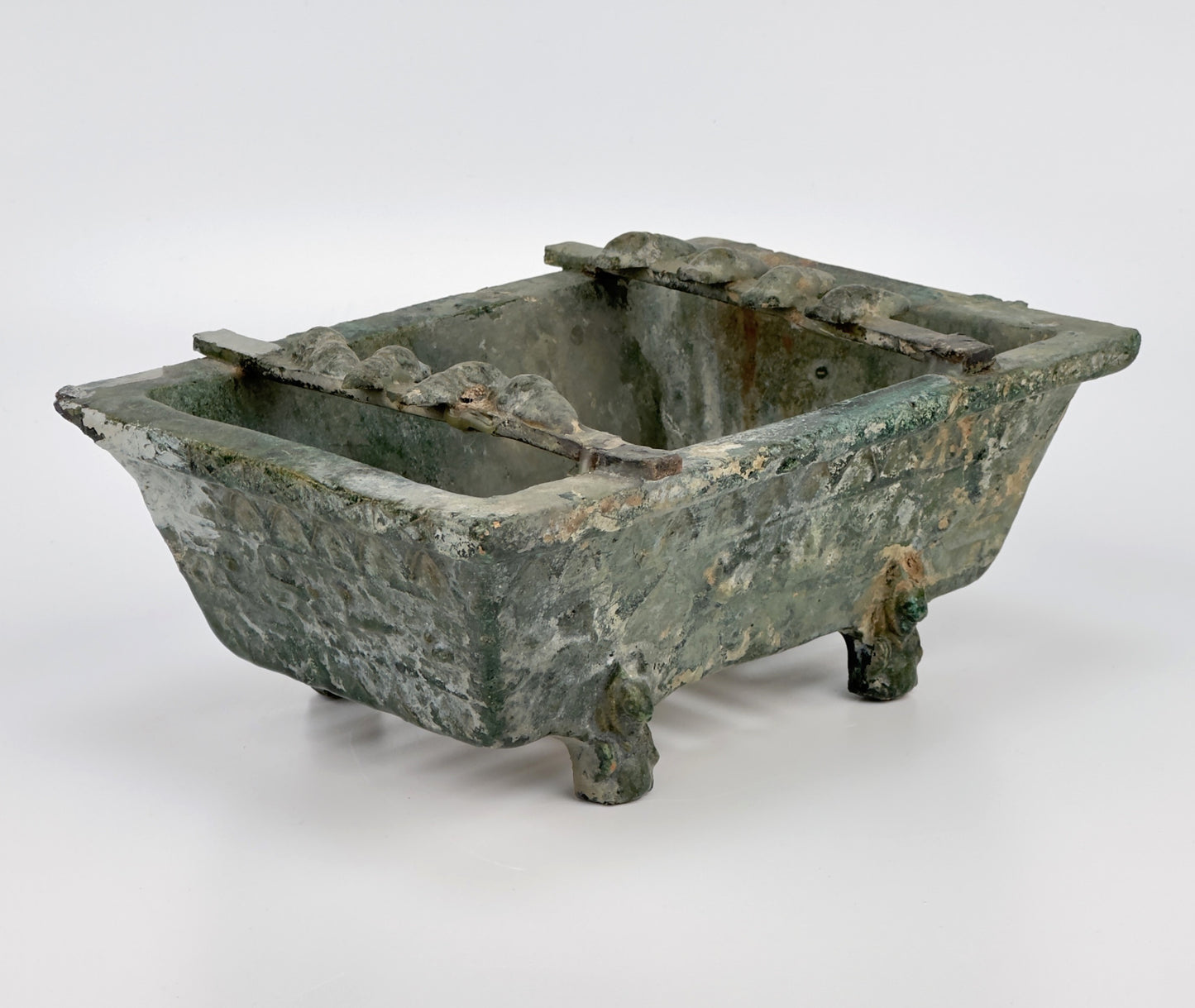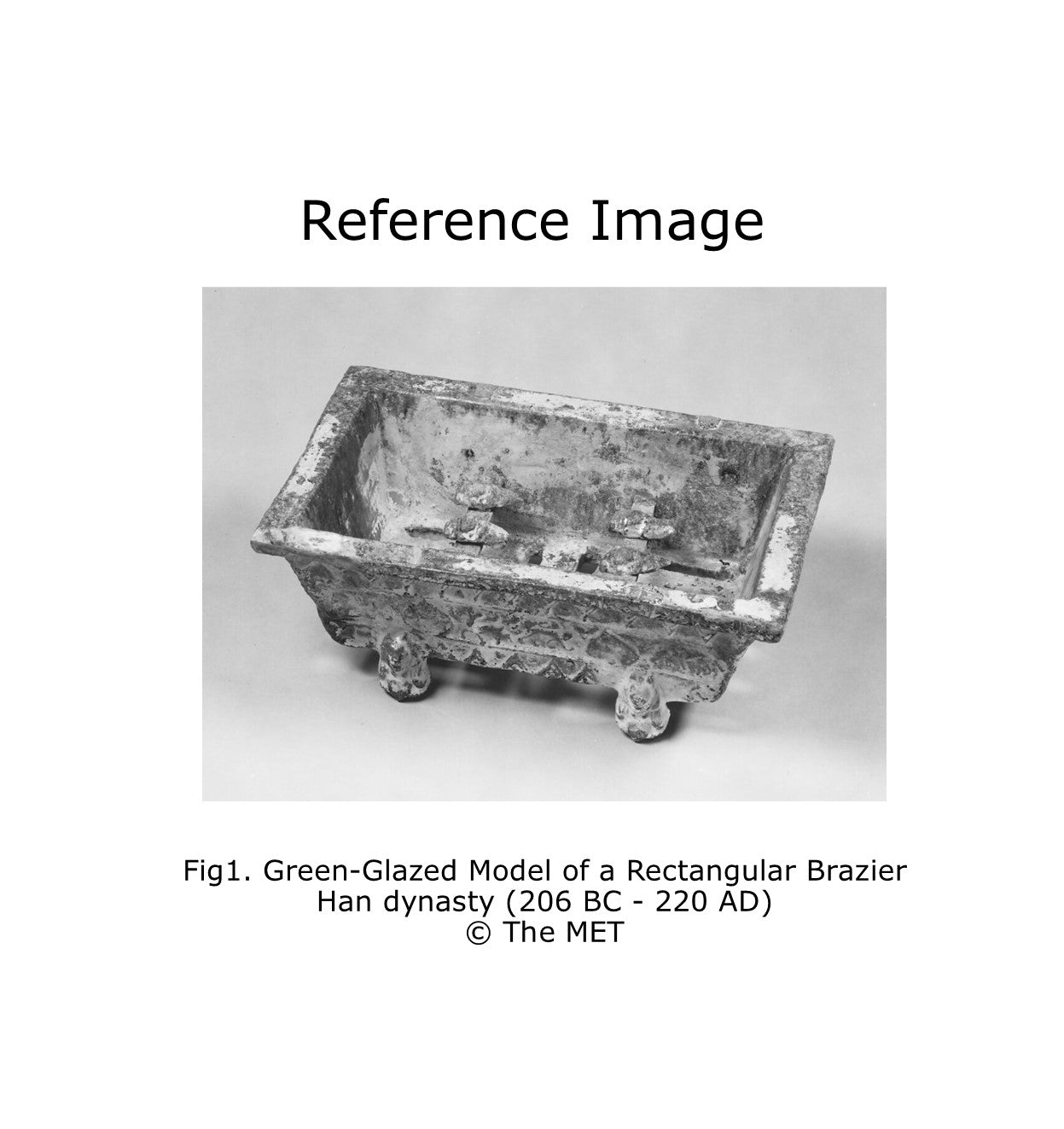AUA Oriental Art
Rare Pottery Rectangular Brazier with cicadas in Green Glaze, Han Dynasty
Rare Pottery Rectangular Brazier with cicadas in Green Glaze, Han Dynasty
Couldn't load pickup availability
This pottery brazier, a burial artifact from the Han Dynasty, features quadrilateral sides that slope inward and a base with slits for ventilation. Each side is adorned with animal motifs and geometric patterns. The brazier stands on feet uniquely shaped like bears, seemingly supporting its substantial weight. The top grill of the brazier displays two rows of cicada figures, with four on each side.
In Chinese culture, cicadas carry multiple symbolic meanings. Firstly, cicadas are often associated with longevity and immortality. This is due to their life cycle, where they spend several years underground only to emerge for a short, active period above ground. Secondly, cicadas represent resurrection and rebirth. The process of shedding their exoskeleton and emerging as new beings symbolizes renewal and life after death. Thirdly, cicadas are sometimes seen as symbols of purity and integrity. This belief stems from the traditional view that cicadas consume only dew from the air and not water, reflecting a life of ascetic purity.
Period : Han Dynasty (206 BC - 220 AD)
Medium : Earthenware with Green glaze
Dimension : 24cm(Width) x 16cm(Length) x 9cm(Height)
Provenance : The piece was acquired in Hong Kong in late 1990s.
Condition : Good(Few repairs were done a long time ago)
Reference :
1) The Metropolitan Museum of Art - Accession Number: 1994.605.26 - Model of a Rectangular Brazier
(Type : Highly related)
https://www.metmuseum.org/art/collection/search/44327
2) HK MoA - Pottery brazier with cicadas in green glaze (Type : Highly related)
https://hk.art.museum/en/web/ma/collections/chinese-antiquities.html
* Han Dynasty Pottery
Han Dynasty pottery, originating from one of China's most significant historical periods (202 BCE – 220 CE), is renowned for its technological and artistic achievements in ceramic production. These artifacts typically feature a distinctive green glaze, although other colors were also used. The pottery often includes intricate decorative motifs, such as animals, mythological figures, and geometric patterns.
The craftsmanship during the Han Dynasty was advanced, with pottery techniques that were innovative for the time. These pieces were not only utilitarian but also held ceremonial and symbolic significance. The shapes and designs of Han Dynasty pottery vary, including items like urns, vases, and figures, reflecting both the daily life and the spiritual beliefs of the period.
Share
